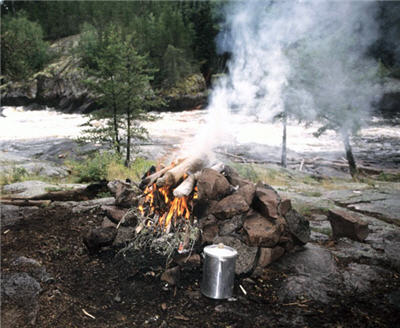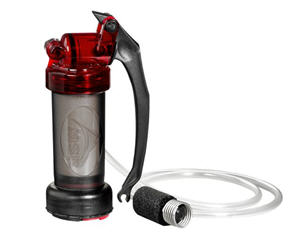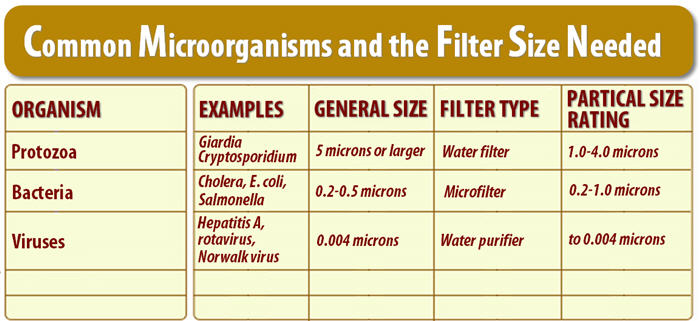
“The Bloodletting on the Bloodvein.” That’s what my Canadian wilderness adventure pals dubbed our fishing and paddling excursion along the Bloodvein River in Ontario and Manitoba. We’d anticipated pleasurable days of gliding the river while fishing for lunch or dinner. Reality delivered a blistering heat wave and hard-core paddling escapade topped off by water-filtration equipment that failed.
 |
| Boiling water is the most full-proof method of water purification, but to be safe, make sure you boil it for at least one minute. |
If the overwhelming heat coupled with torturous 10- to 12-hour paddling segments involving scores of difficult portages didn’t debilitate us, surely the water might. Various microscopic organisms can contaminate water supplies and cause potentially serious, even fatal, illnesses among wilderness travelers. Otherwise, we’d simply have immersed our faces into the river to drink.
![]() TIP: Portable Water Filter Options & Tips for Using Them
TIP: Portable Water Filter Options & Tips for Using Them
Boiling delivered potable water, but we were barely able to cook enough to meet our daily needs. Additionally, the water we did boil never cooled to a satisfying or true body-cooling temperature.
In the backcountry, the big concern is fluid loss due to diarrhea and vomiting caused by contaminants in drinking water. Fluid loss can lead to hypovolemic shock and possibly death.
Three Primary Methods of Purifying Water in the Wilderness
Purifying water for consumption isn’t difficult with proper planning. Although the Centers for Disease Control and Prevention (CDC) suggests five ways to purify water, three methods are viable in the field – boiling, chemical treatment and filtration. Each requires consideration by backcountry travelers.
1. Boiling water often involves bulky gear but is the most full-proof method of purification. By the time water boils, pathogens are killed, even at high altitude. To be safe, boil water for at least one minute.
 |
| Katadyn Ultralight Series Micropur MP1 Water Purification Tablets |
2. Chemical treatment is considered the easiest and quickest way to purify. Iodine and chlorine, in tablet form, are the chemicals used. A bottle of tablets has a place in every outdoorsman’s pack, as a back-up if not principal purifying resource. Before hitting the trail, review the directions on the bottle as well as the tablet expiration date. Also note, open bottles of tablets must be used within a certain period. If unsure as to potency, buy a new bottle. Finally, understand chemical purification may be only partially effective depending on the water temperature. The colder the water, the more difficult it is to purify.
3. Water filters can be bulky and sometimes clog. The key to consider with water filters is the micron rating. Micron ratings define the size of organisms and/or viruses that can pass through the filter. Two types of filters are used.
 |
| MSR MiniWorks Ceramic Filter |
- Membrane filters boast filtering sheets with precisely sized pores to prevent objects larger than the pores from passing through. They’re relatively easy to clean but can clog more quickly than depth filters.
- Depth filters use dense absorbent materials such as carbon or ceramic to trap particles as water flows through the material. Activated carbon filters also remove a range of organic chemicals and heavy metals. These filters can be partly cleaned with backwashing, but rugged treatment may crack the filters making them useless.
Ultraviolet light and solar radiation also can disinfect water but are less viable for wilderness travelers due to time and sunlight constraints and availability of electricity.
![]() Check out the latest water purification systems for camping, hiking and backpacking at Bass Pro Shops.
Check out the latest water purification systems for camping, hiking and backpacking at Bass Pro Shops.
Contaminants in Water That Cause Illness
The U.S. Environmental Protection Agency (EPA) reports that a vast majority, perhaps as much as 90 percent, of waters worldwide are contaminated. Even seemingly crystal-clear backwoods waters can cause illness. Microbes, chemicals, and pathogens are concerns.
Common Microorganisms and the Filter Size Needed
To understand microns, consider the period at the end of this sentence. It’s is approximately 600 microns in size.![]() Click Here: for a larger view of the chart below showing microorganisms and water filter size needed.
Click Here: for a larger view of the chart below showing microorganisms and water filter size needed.

Source: The Backpackers Field Manual by Rick Curtis
- 6032 views

